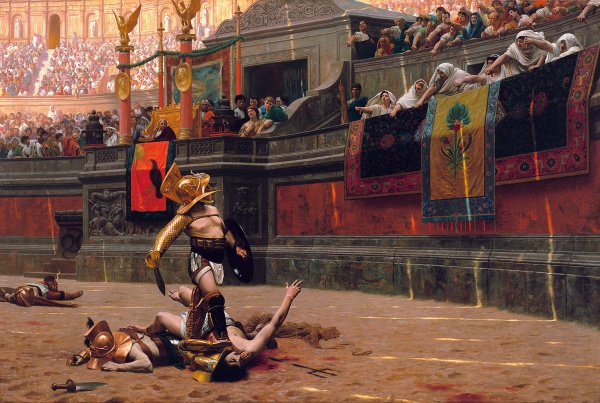Facts About Pollice Verso
"Pollice Verso" painted in 1872 by French artist Jean-Léon Gérôme, captures a dramatic moment in ancient Rome. The artwork depicts a victorious gladiator in the Colosseum, awaiting the crowd's verdict. The spectators, including the Vestal Virgins, signal a thumbs-down gesture, sealing the fate of the defeated gladiator who pleads for mercy. This iconic image even inspired scenes in the 2000 film "Gladiator."
The painting was a significant acquisition, purchased by Alexander Turney Stewart for a then-record 80,000 francs. It was first exhibited in New York City and is now housed at the Phoenix Art Museum in Arizona. Gérôme's depiction of the thumbs-down gesture has sparked debates about its historical accuracy, with some questioning whether the gesture indeed signified death in ancient Rome.
Gérôme's meticulous attention to detail is evident, particularly in his representation of the Colosseum's architecture and the gladiators' armor, which were based on archaeological findings from Pompeii. However, there are some historical inaccuracies. The portrayal of the Vestal Virgins as bloodthirsty might have been influenced by early Christian texts that criticized the brutality of the Roman arena.
The painting's impact on cinema is undeniable, shaping how the ancient world is visually represented and notably influencing Ridley Scott's "Gladiator." Gérôme's venture into sculpture resulted in a bronze statue based on "Pollice Verso" showcased at the 1878 Universal Exhibition in Paris. After Gérôme's death, his son-in-law Aimé Morot honored him with a sculpture, now displayed at the Musée d'Orsay in Paris.

 Canada
Canada